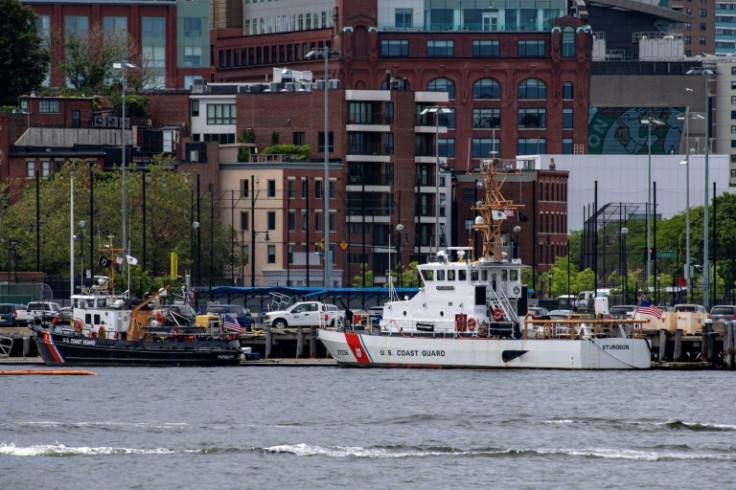Titan Sub Victims Likely Learned They Were Dying 48 Seconds Before Implosion, Expert Says

KEY POINTS
- A Spanish underwater expert suggests the Titan submersible quickly plunged to the ocean floor
- José Luis Martín believes Titan pilot Stockton Rush failed to activate the emergency lever
- Martin compared the chaos inside the sub after it had a malfunction to a "horror movie"
An expert suggested that the passengers inside the doomed OceanGate's Titan submersible were likely aware their vessel had a malfunction during their descent into the Titanic wreck.
In an interview with Spanish news outlet NIUS, engineer and underwater expert José Luis Martín believes the Titan likely lost its stability due to an electric failure at a depth of about 5,500 feet.
Martin said the scenario could quickly plunge the Titan to the bottom of the ocean in a vertical position "as if it were a stone and without any control" for about 3,000 feet.
"At this point, the submersible begins to fall headlong towards the seafloor, and with control and safety functions damaged, it can no longer be maneuvered," Martin said, according to the New York Post.
Martin theorized that the submersible's pilot, OceanGate CEO Stockton Rush, failed in trying to activate the "emergency lever to drop weights" and return to the surface of the Atlantic Ocean.
"The Titan changes position and falls like an arrow vertically because the 400 kilos (880 pounds) of passengers that were at the porthole unbalance the submersible," the Spanish expert said.
"Everyone rushes and crowds on top of each other. Imagine the horror, the fear, and the agony. It had to be like a horror movie," Martin added, suggesting that everything happened between 48 to 71 seconds of the Titan's free fall to the ocean floor.
Martin believes that "the implosion and instantaneous sudden death occurs" within those timeframes.
Another underwater expert, Virginia Tech's ocean engineering professor Stefano Brizzolara said last month that the Titan's pressure hull could have a defect that led to the catastrophic implosion.
Brizzolara noted that in OceanGate's case, "any small material and geometric imperfection, misalignment of connection flanges, tightening torque of bolted connection" may have contributed to the implosion of the submersible while it was descending to the Titanic shipwreck.
He also pointed out that the carbon fiber-reinforced plastic, which the Titan was made of, was "very prone to possible defects" that could break into small fragments.
Brizzola added that the submersible's previous voyages to the Titanic in the past few years had also likely caused its hull to "deform and shrink."
On June 23, a week-long massive search for the Titan ended after the U.S. Coast Guard announced they found parts of the submersible about 1,600 feet from the bow of the Titanic wreckage.
All five passengers were killed during the underwater disaster: Titan's pilot Rush, French diving expert Paul-Henri Nargeolet, British billionaire Hamish Harding, Pakistani businessman Shahzada Dawood, and his son, Suleman.
The mangled debris from the ill-fated submersible was hauled to the surface in eastern Canada on June 28.

© Copyright IBTimes 2025. All rights reserved.






















